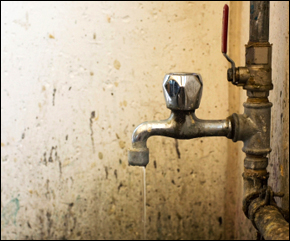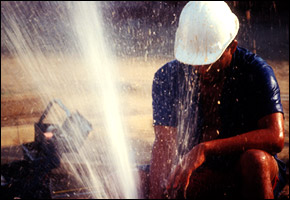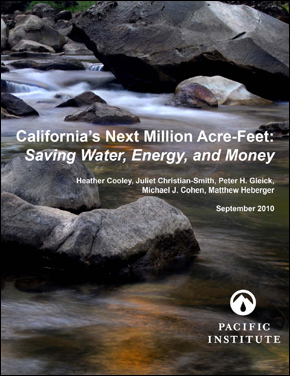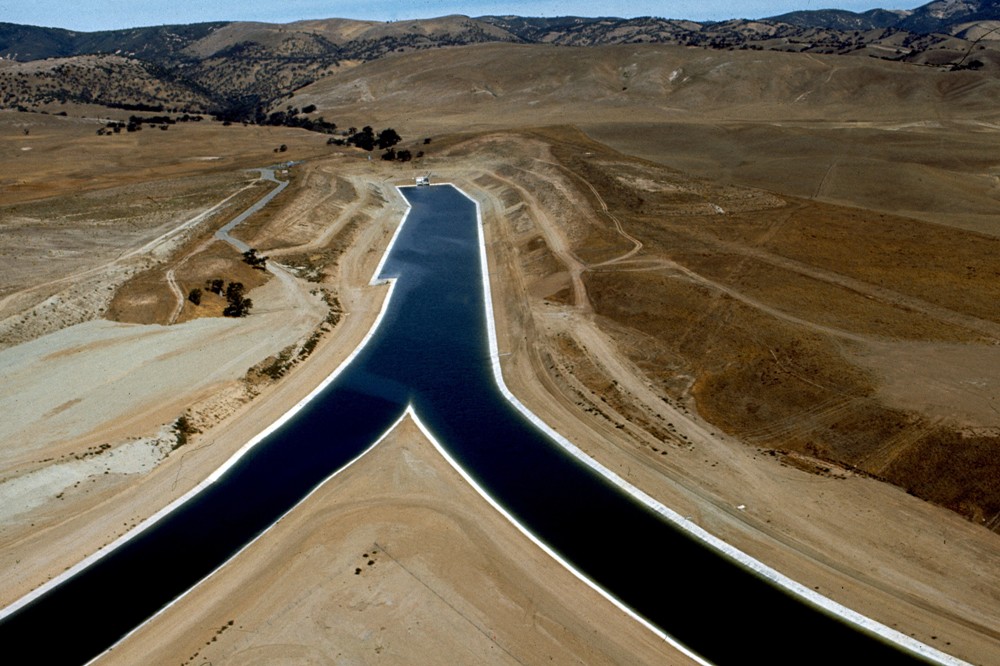Reforms Could Lead to Huge Water Savings for California, Pacific Institute Says
The Pacific Institute believes California can conserve already threatened freshwater resources, but keep growing.
 By Andrew Maddocks
By Andrew Maddocks
Circle of Blue
Replacing inefficient appliances in homes and upgrading wasteful agricultural equipment could save one million acre feet of water in California, according to a Pacific Institute report released Monday. These reforms could also save the parched state six to eight million acre feet by 2020.
Peter Gleick, founder and president of the Pacific Institute, delivered the findings during a U.S. House of Representatives Subcommittee on Water and Power hearing. The congressional meeting was called to discuss ways to reach Gov. Arnold Schwarzenegger’s call to reduce freshwater consumption to 20 percent by 2020.
In an interview with Circle of Blue, Gleick said the meeting was “contentious,” as some in attendance took the opportunity to express anger regarding the already diminishing freshwater supply. Among those who also testified were farm owners, businessmen, water district general managers and professors.
Despite the tense atmosphere, Gleick said his recommendations were well-received.
“I was trying to say, ‘here’s the good news,’” he said. “Part of our water problems can be resolved by reducing the wasteful use of water.”
The institute proposed implementing relatively low-cost efficiency and conservation measures that would save 400,000 acre feet currently lost in at-home usage, as well as 600,000 acre feet that’s lost on farms.
Some suggested changes included replacing two million inefficient or leaky toilets, showerheads and faucets, as well as old, top-loading washing machines. Replacing several hundred thousand spray valves, used for dishwashing in restaurants, was another proposed solution to lower urban consumption.
As for the agricultural sector, Gleick suggested certain farms develop more efficient irrigation systems and better soil moisture management. He also suggested implementing a timed, water-budgeting practice called regulated deficit irrigation.
Those measures would have a high up-front cost, but be cost effective over the lifetime of the investment, Gleick said.
The institute estimates installing new household and commercial appliances would cost $1.7 billion, while upgrading the states’ orchards, vineyards and farms would cost roughly $100 per acre foot.
“There’s no solution that doesn’t require money and effort,” Gleick said.
But the MacArthur fellow believes these measures will save more water at lower economic and environmental costs than proposed industrial alternatives.
One of the leading alternative proposals is the Temperance Flat reservoir, a $3 billion project that will expand the freshwater supply rather than promote conservation.
During his testimony, Gleick said that the proposed Temperance Flat dam would exceed $3 billion in costs and likely only provide between 100,000 and 200,000 acre feet of water. He has also previously written about the cultural and environmental damage the dam would have inflict upon Native Americans.
But some farmers have called the institute’s recommendations unrealistic, according to the Valley Voice newspaper. Other farmers have already experienced severe impacts from water shortages, and might not be able to afford the immediate costs of efficient equipment retrofits and alternative irrigation, NPR reports.
Gleick said funding for urban and agricultural upgrades should come from a variety of sources: home and farm owners, as well as local, state and federal governments, or even outside grants. He added that these measures promise a return on investment for years to come.
Andrew Maddocks is a reporter for Circle of Blue. Reach him at circleofblue.org/contact.
is a Washington, D.C–based correspondent for Circle of Blue. He graduated from DePauw University as a Media Fellow with a B.A. in Conflict Studies. He co-writes The Stream, a daily summary of global water news.









solving water issues i guess should be done hand in hand not solely by the government. The government would need the aid of the consumers and consumer would need the help of the government. All of us should be working together because water shortage is not just a problem of one but problem of all.